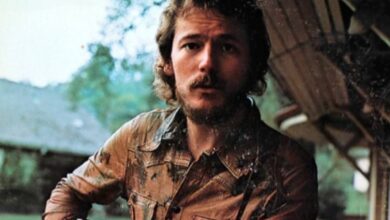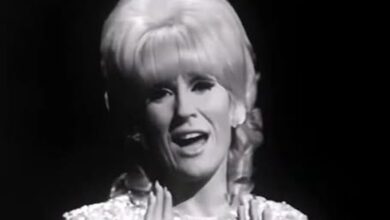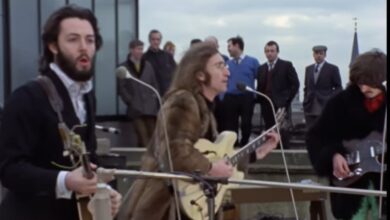How “I Am a Man of Constant Sorrow” Became an American Classic: The Soggy Bottom Boys and the Song That Captivated a Generation
Few songs in modern American music are as instantly recognizable—or as steeped in storytelling tradition—as “I Am a Man of Constant Sorrow” by the Soggy Bottom Boys. Although this classic bluegrass anthem shot to fame with the 2000 film O Brother, Where Art Thou?, its roots stretch deep into early 20th-century Appalachian folk music. The movie’s version, featuring the fictional Soggy Bottom Boys and George Clooney’s lip-synching, turned an old standard into a cultural sensation, captivating both longtime folk fans and a whole new generation of listeners.
The song’s journey begins long before Hollywood. “Man of Constant Sorrow” first appeared on record in 1913, credited to Dick Burnett, a blind Kentucky fiddler. Its plaintive lyrics and haunting melody quickly became a staple in American folk circles, passed from one performer to another, each adding their own touch. Over the years, artists like Emry Arthur, the Stanley Brothers, and Bob Dylan would reinterpret the song, ensuring it never faded from the musical landscape.
But it was the Soggy Bottom Boys’ rollicking take, as featured in O Brother, Where Art Thou?, that truly propelled the song to legendary status. In the film, the song’s performance is a pivotal plot point, helping three escaped convicts—played by Clooney, John Turturro, and Tim Blake Nelson—gain their unlikely fame as a Depression-era bluegrass group. Behind the scenes, the vocals were supplied by bluegrass luminary Dan Tyminski, with additional harmonies by Harley Allen and Pat Enright, while producer T Bone Burnett masterminded the soundtrack.
The soundtrack’s release became a phenomenon of its own. Selling over eight million copies in the U.S. alone, the album sparked a renewed interest in American roots music, bluegrass, and gospel traditions. “I Am a Man of Constant Sorrow” was at the forefront, receiving massive radio airplay, winning the Grammy for Best Country Collaboration, and becoming synonymous with both the film and the early 2000s folk revival.
Live performances by the Soggy Bottom Boys—assembled from some of the best musicians in bluegrass—further cemented the song’s status as a showstopper. Audiences everywhere joined in the instantly recognizable chorus, echoing the woes and resilience of the song’s protagonist. Each performance became a celebration of the perseverance and sorrow reflected in the lyrics, resonating with listeners across generations and backgrounds.
What makes “I Am a Man of Constant Sorrow” so compelling is its universal theme. The lyrics speak to hardship, loss, and an unshakeable sense of wandering—a man driven by fate through a life of trials. The simplicity and directness of the song allow it to transcend time and genre, connecting deeply with anyone who’s faced adversity or longed for a better tomorrow.
The success of the Soggy Bottom Boys version inspired a wave of covers and tributes from across the music world. Artists ranging from Alison Krauss & Union Station to Billy Strings have performed the song, each bringing their own style while honoring its timeless core. It has become a rite of passage for bluegrass musicians, a song that both tests and showcases their interpretive skills.
For the actors involved in O Brother, Where Art Thou?, the song became a defining part of their film careers. George Clooney famously worked to master the performance—even though his singing voice was ultimately dubbed, he became forever associated with the song. The movie’s iconic train and barn dance scenes, all set to “Constant Sorrow,” remain some of the most memorable in modern cinema.
The legacy of “I Am a Man of Constant Sorrow” also lives on in the real world through festivals and bluegrass jams. It’s a staple at gatherings like MerleFest and the Telluride Bluegrass Festival, where fans old and young sing along with gusto. These moments are a testament to the song’s ability to bring people together in a shared expression of hardship and hope.
Remarkably, the song’s lyrics—about leaving loved ones behind, facing an uncertain future, and enduring endless woes—have remained largely unchanged for over a century. The enduring nature of these themes speaks to the song’s universality, while each new rendition breathes fresh life into its story. In every version, listeners find comfort in the idea that their struggles, too, are part of a longer, shared human journey.
For the musicians who have taken up “Constant Sorrow,” the song is both a tribute and a challenge. Bluegrass pickers and folk singers alike revere it as a test of both vocal and instrumental prowess. The Soggy Bottom Boys’ performance, with its tight harmonies and lightning-fast picking, set a modern standard for how the song could be both faithful and invigorating.
The impact of “I Am a Man of Constant Sorrow” on pop culture cannot be overstated. The Soggy Bottom Boys became a phenomenon, performing on national television and even embarking on tours. The soundtrack’s success led to a surge in sales for traditional bluegrass records and influenced a generation of filmmakers and musicians to explore America’s musical heritage.
As the years go by, the song continues to find new fans through streaming, live performances, and cover versions. Its blend of sorrow, strength, and the search for redemption remains as relevant now as it was a century ago. Each time the opening notes ring out, a hush falls over the crowd—a shared moment of connection, nostalgia, and hope.
In the end, “I Am a Man of Constant Sorrow” endures because it is more than just a song. It is a living story, shaped by each voice that sings it and every ear that hears it. The Soggy Bottom Boys may have reintroduced it to the world, but its power lies in its ability to unite generations through the simple truth of struggle and survival.
So whether you first heard it in a movie theater, at a bluegrass festival, or around a campfire, “I Am a Man of Constant Sorrow” remains a beloved anthem of American music—a song that will keep traveling, sung by new voices, for many years to come.





